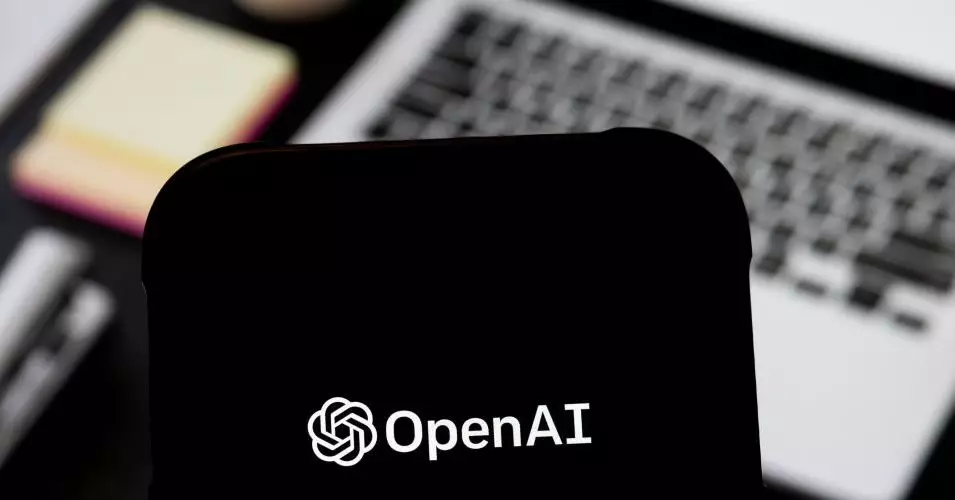In a watershed moment for the artificial intelligence landscape, OpenAI, helmed by CEO Sam Altman, has announced plans to unleash a groundbreaking open-weight AI model in the upcoming months. This decision marks a notable pivot in strategy, primarily driven by competitive pressures from models like DeepSeek’s R1 and Meta’s Llama, which have showcased the transformative potential of open-weight architectures. Altman’s candid acknowledgment that OpenAI was “on the wrong side of history” encapsulates the urgency of this strategic transition. The growing acceptance of open-weight models in the AI community underscores an essential truth: transparency and accessibility are no longer optional in the race for AI innovation.
The Economic Imperative
The accelerating adoption of open-weight models is not merely an ideological shift; it reflects significant economic realities. DeepSeek’s R1 model has been reportedly trained at a fraction of the costs typically seen in large-scale AI models, raising the stakes for OpenAI. This raises a fundamental question: how can organizations maintain competitive advantages without incurring exorbitant costs? Altman’s remarks suggest that OpenAI feels an increasing pressure to demonstrate economic feasibility in its AI offerings, hinting at a potential democratization of AI that could dismantle the paywalls currently dominating the market.
Open-weight models provide not only cost savings but also remarkable flexibility. They allow businesses and researchers to modify the models to suit highly specialized applications or sensitive data environments. In a world where data privacy concerns are paramount, the ability to train and customize models in-house could empower organizations to handle confidential information while maintaining compliance with privacy regulations. The implications for industries ranging from healthcare to finance are profound, as bespoke AI solutions can cater more precisely to individual organizational needs.
Mitigating Risks While Encouraging Growth
However, with great innovation comes an array of challenges. OpenAI acknowledges the potential risks associated with open-weight models—claims that they could facilitate cyberattacks or even bioweapons development loom large in discussions. To navigate these treacherous waters, the organization is committed to implementing rigorous testing protocols to ensure safety and ethical deployment. The voices of caution, represented by Johannes Heidecke from OpenAI, echo the sentiment shared among researchers about balancing innovation with safety.
This balancing act is even more critical given that open models can sometimes lend themselves to misuse. While OpenAI is equipped with a “Preparedness Framework” designed to dictate the conditions under which models may be released, the ethical ramifications of an open-weight approach cannot be underestimated. Striking a balance between innovation and safety needs to become a guiding principle for AI developers, especially as the potential for misuse becomes more pronounced.
The Landscape of Open AI Models
The conversation around open models has transformed notably over the past few months. Meta’s initiation of a more transparent approach with its Llama model paved the way for a spate of open-weight initiatives that broaden access to AI technology. However, while these efforts are commendable, they also reveal shortcomings; many of these models still possess opaque elements, from the datasets utilized for training to specific limitations incorporated by the companies behind them.
Meta’s licensing conditions, for instance, highlight a paradox: while encouraging open development, they also impose restrictions that may stifle commercial creativity. OpenAI’s forthcoming model could serve as a corrective in this dynamic, fostering an environment where creators are incentivized to innovate freely rather than navigate convoluted licensing agreements.
A Call to Developers
In light of these developments, OpenAI’s recent call for developers to apply for early access to the forthcoming model is a crucial step in fostering a strong community around open-weight architectures. Upcoming events aimed at showcasing early prototypes illustrate an eagerness to embrace collaboration and transparency, principles that will be essential in shaping the future of AI. Engaging developers in open dialogue about the potential and pitfalls of these models can lead to enhanced collective understanding and result in better frameworks for implementing safeguards.
The future of AI is undeniably intertwined with the values of openness, collaboration, and ethical responsibility. OpenAI’s strategic pivot to introduce an open-weight model could catalyze a broader shift in industry norms, ushering in an era characterized by innovation that is accountable, transparent, and progressive. As the landscape evolves, it’s essential that AI providers maintain a mutual commitment to safety while pushing the boundaries of what technology can achieve.

